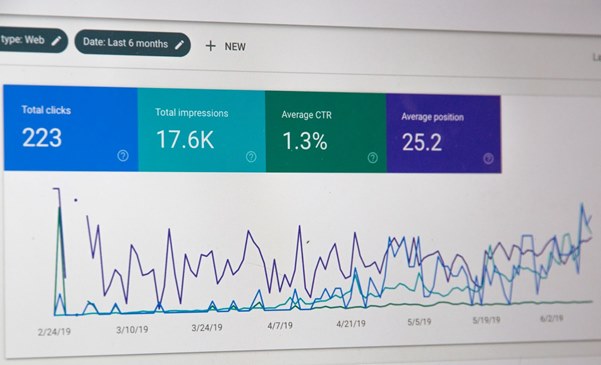Ad Copy Strategies That’ll Boost Your CTR And Increase Your ROI By 2X
Crafting ads that attract potential clients like a magnet and persuade them to interact with your business requires more than having a lot of money to spend on it. Successful Ads, like the “Real Beauty” from Dove or the “Don’t Text and Drive” UK PSA campaigns, displayed clever strategies that people widely regarded as funny, heartfelt, or simply relatable.
Creating a clear and compelling ad copy strategy can set your campaigns for massive conversion. These strategies are used before making Google ad copies, during the writing process, and after making the copy.
Boost your ads’ performance to increase click-through rate and double your return by reading and carefully implementing the strategies in this guide.
Define or Redefine Your Content Strategy
One major mistake businesses make, especially when starting, is not developing a proper buyer persona, content strategy, and marketing strategy. Your content strategy encompasses all of these and helps define your buyers in the most precise way possible, so you can know almost exactly what interests them. With this knowledge, you can make copies that feel relatable, emotional, and genuine.
If you have a content strategy already but struggle to understand your buyer persona, consider starting all over or get help from professionals if you have to. It is easier to brainstorm ideas when your content strategy is clearly defined, and it also guides your copywriting team in their creativity flex.
The Headline is a Big Deal
When developing fantastic content, the headline is a crucial component. Why? Because the headline determines if your target audience will read that post at all. It gives the first impression about the rest of whatever you have to offer.
An average web user reads 80% of headlines every day, but only 20% read articles. This shows a captivating header helps you gain more readers and influences search engine and virality, crucial to improving CTR and ROI. With this, you should consider dedicating an excellent copywriting team to develop a robust and strategic headline that syncs with your overall copy.
Keep Communication Succinct
Depending on the Ads platform you are communicating from, you don’t always have the privilege to say everything you want in one piece. The best way to engage your audience when passing information is to keep things creative and relevant, such that each smaller piece reads like a decent summary.
It is also crucial for any copy related to your business to have a consistent communication style and voice. Keep in mind that your business should maintain effective communication throughout the buyer’s journey. It is what keeps faith in your product or service quality and helps build equity in the long run.
Create Urgency
According to the SearchEngine Journal, one of the most proven tactics for ads is to write your copy in a way that creates a sense of urgency for your product or service on offer. This is, of course, useful after you can establish to the target customers that what you offer is valuable and scarce.
Creating urgency is a popular strategy of luxury brands. Apple deals with its iPhone release using hype and FOMO to induce pre-order, and it works. Fashion brands are now known for doing similarly, and it even has the name Limited Drops.
Another way to induce urgency in your copy is to use persuasive words like Now! Exclusive, or Limited Edition. Other methods include displaying the number of products available or tickets currently in real-time.
Figures and Numbers Do Wonders
According to the North Carolina Press Association, having relevant and naturally positioned figures in your ads can help project an image of legitimacy for your ads. For example, instead of “our customers made a lot of money from our offer,” say “customers made 8% more than usual from our offer”. Using figures and numbers help potential customers relate better with your offering, especially when they have an overload of choices.
One remarkable show of numbers in action is the report of The Next Web’s “Deal or 104 Deals” experiment. The company tested two variations of CTA to the website’s offer, and the engagement for the one indicating the number of done deals increased by 257.8%.
Repurpose Your Best Ads Copies
Repurposing your existing ad copy is an intelligent way to retarget your best-performing content. It can let you reach new audiences, announce changes to previous offers or maintain a popular trend. Besides, according to The Marketing Rule of 7, a prospect needs to “hear” the advertiser’s message at least seven times before they’ll decide to make a purchase.
Repurposing ads copy is making the most of your effort because the chances of the new audience interacting positively with the copies as the previously targeted audience did is high.
Keep an Eye on Competition
Like the famous saying of Sun Tzu, “If you know the competitor and know your business, you won’t have to fear the result of a hundred competitions in a niche.” If certain ad copies seem to work for your competitors, you should consider experimenting with them.
If you’re in a new niche with little to no competition, focus on your strategy and cover your tracks from competitors as much as you can by making company-specific copies. But in a niche overcrowded with competition, you need to know the kind of copy your competitions send out to better them at it. Constantly audit what works for your ads and evaluate what the rest are doing or not doing right.
Make Your Landing Page User-friendly
A landing page can be a significant roadblock to your ROI hopes, even if your potential customers found your ads and love them. Usually, this is the first interaction of potential leads with your E-commerce site or other website types and the first impression of your entire business. A landing page is where you probably request visitors’ contacts to make them leads for a follow-up, so having it look terrible can be detrimental to your copywriting effort and conversion rate.
Conclusion
Implementing Google ads copy best practices benefits your business in both the short and the long term. It does not only help you put the business in a position for a better ROI, but it also boosts the Quality Score over time. Your Quality Score makes Google decide which Ads should go to the top of the SERP. Quality Score combines your Ad relevance to users, landing page experience, and expected CTR.





